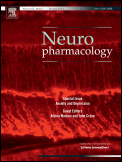
“Cannabis sativa (marijuana) is a fibrous flowering plant that produces an abundant variety of molecules, some with psychoactive effects. At least 4% of the world’s adult population uses cannabis annually, making it one of the most frequently used illicit drugs in the world. The psychoactive effects of cannabis are mediated primarily through cannabinoid receptor (CBR) subtypes. The prevailing view is that CB1Rs are mainly expressed in the central neurons, whereas CB2Rs are predominantly expressed in peripheral immune cells. However, this traditional view has been challenged by emerging strong evidence that shows CB2Rs are moderately expressed and function in specific brain areas. New evidence has demonstrated that brain CB2Rs modulate animal drug-seeking behaviors, suggesting that these receptors may exist in brain regions that regulate drug addiction. Recently, we further confirmed that functional CB2Rs are expressed in mouse ventral tegmental area (VTA) dopamine (DA) neurons and that the activation of VTA CB2Rs reduces neuronal excitability and cocaine-seeking behavior. In addition, CB2R-mediated modulation of hippocampal CA3 neuronal excitability and network synchronization has been reported. Here, we briefly summarize recent lines of evidence showing how CB2Rs modulate function and pathophysiology in the CNS.”








